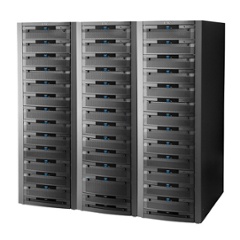 Solid State Drives (SSDs) have been around for a while. As the cost has come down and speed and capacity has gone up, there has been a major shift from magnetic hard drives to SSDs in in data center and cloud storage systems.
Solid State Drives (SSDs) have been around for a while. As the cost has come down and speed and capacity has gone up, there has been a major shift from magnetic hard drives to SSDs in in data center and cloud storage systems.
Not everyone is switching, and many data centers still have both types of drives depending on their application and network requirements. Considerations typically boil down to three factors:
- Storage capacity — With magnetic HDDs, 2.5-inch drives max out at 3TB of storage, while a 3.5-inch drive can reach up to 10TB. For SSDs, you’re looking at a maximum storage of 4TB, and that capacity is currently both rare and expensive.
- Price — The price of these drives can vary, but overall, you can expect to pay twice as much for an SSD than you would for the same capacity magnetic hard drive.
- Speed — Here’s where the first two factors are left by the wayside. HDD simply cannot match the potential speed of an SSD. In theory, SSDs can be 50-80% faster, assuming that the system processors and network can keep up. Many storage system controllers cannot take advantage of that full speed of the drives – at least not yet.
How does all this affect your business in relation to your company’s storage system lifecycle management and hardware disposition processes?
If you are replacing hard drives, or whole systems, you need to ensure that every drive has certified data erasure if they are going to be reused. And if they cannot be remarketed or your data security policies require physical destruction, you need to be sure the process meets industry standards and that the material is recycled properly. ITAD processes are especially important when you have both magnetic drives and SSD’s, because you must make sure that the erasure or destruction process is able to distinguish and take the right actions to ensure full data destruction and security.
When you have hundreds, or thousands of drives to dispose of, you need to make sure the whole process is secure and also is easy for your team to manage. It’s important to have the data destruction process occur quickly after decommissioning; drives sitting around off network present a data breach risk.
Is your company upgrading to SSD or higher capacity magnetic drives? Or have you already made the change and need to ensure proper processes to protect your business and its clients? Contact Lifespan to learn more about the difference between magnetic and solid state drive data destruction, and best practice processes to ensure compliance and data security.

